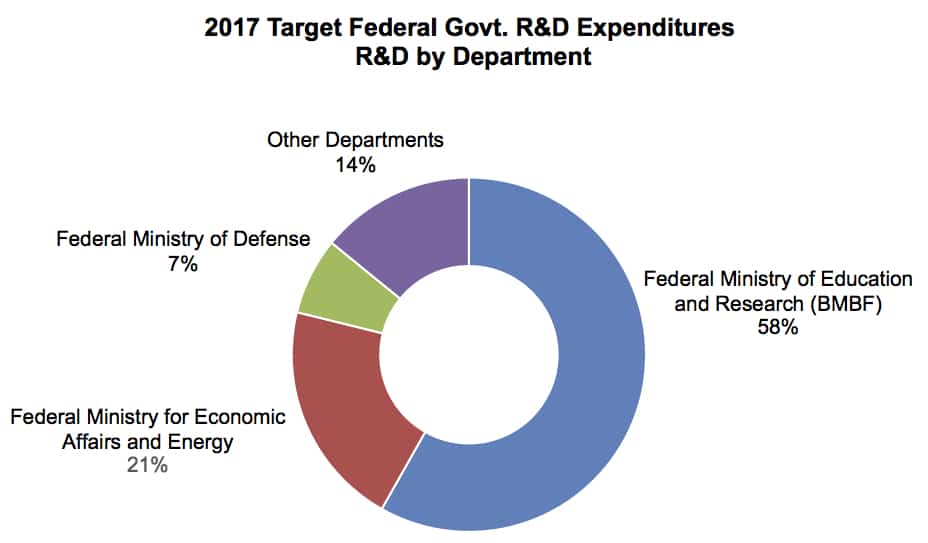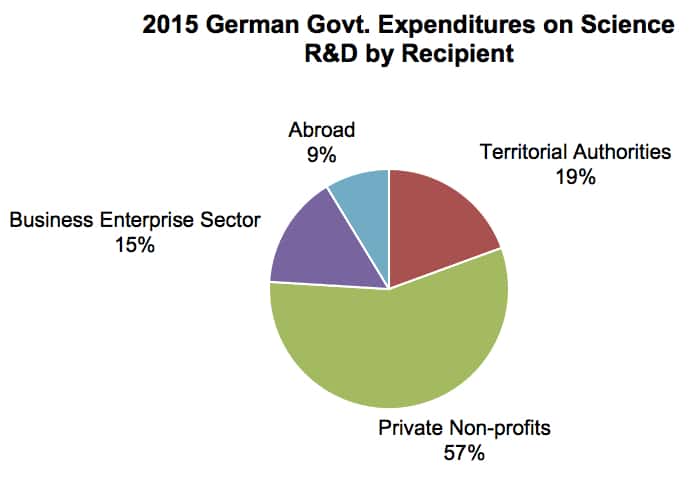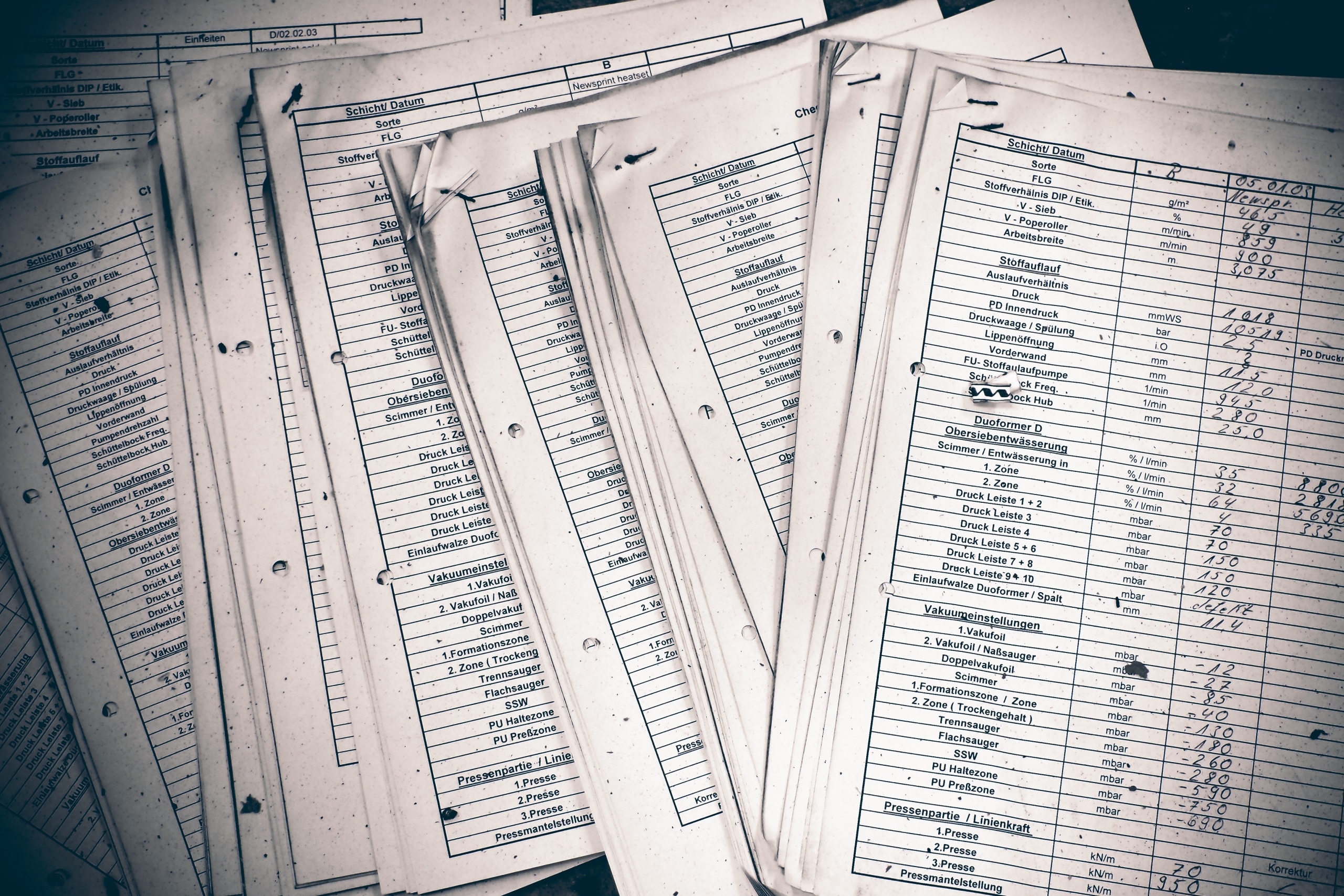News: Onward and Upward: Germany’s 2017 Targets for Government Science R&D Spending
Government science R&D in Germany has been on a steady increase for the last decade, with the country making large investments in scientific and technological innovations. According to the “Education and Research Figures 2017” report released by Germany’s Federal Ministry of Education and Research (BMBF), the German government’s expenditures on science R&D is estimated to total €17.2 billion ($19.1 billion at €0.90 = $1) in 2017, up 8.9% from the estimated 2016 target of €15.8 billion ($17.6 billion). In 2017, R&D alone makes up 75% of total science R&D spending (total R&D) by the government. “Total R&D” as defined by the report includes R&D as well as “academic teaching and education, and other related scientific and technological activities,” such as feasibility studies and information services.
German Government R&D Expenditures by Funder
The vast majority of the German government’s 2017 expenditures on science R&D will be by the Federal Ministry of Research and Education (BMBF), while the Federal Ministry of Defense will have the smallest R&D expenditure (see pie chart below). Among “Other Departments,” the largest R&D expenditure will come from the Federal Ministry of Food and Agriculture, which has a target investment of €780 million ($867 million). Much smaller in comparison is the Federal Ministry of Health’s R&D expenditures, which are targeted at €210 million ($233 million) this year, and the Federal Ministry for the Environment, Nature Conservation, Building and Nuclear Safety, whose target is €230 million ($256 million).

German Government R&D Spending by Sector
Health Research and the Health Industry is the sector that accounts for the largest portion of the German government’s science R&D expenditures. The sector’s 2017 science R&D spending is targeted to be €2.4 billion ($2.7 billion), a 6.4% increase from 2016’s target, and 91% of the “total R&D” spending projected for this area in 2017. Figures for three other notable research segments that impact analytical instrument and lab product usage are shown in the table below.

Federal R&D programs in Germany account for the vast share of government funding and include the High-Tech Strategy initiative and sustainable energy programs. The Federal Ministry of Education and Research’s (BMBF) expenditure on science R&D is also mostly within the Health Research and Health Industry sector, with a 2017 target of €2.2 billion ($2.4 billion), up 5.9% to make up 100% of the Ministry’s “Total R&D” in that sector. Also topping €1 billion ($1 billion) in 2017 target for the BMBF’s science R&D expenditure is Climate, Environment and Sustainability at €1.1 billion ($1.2 billion) a 7.0% increase from 2016’s target expenditure, and Large-scale Equipment for Basic Research at €1.3 billion ($1.4 billion) a 2.3% increase. BMBF’s science R&D spending target for Energy Research and Energy Technologies is expected to leap 9.9% in 2017 to €716.5 ($796.1 million), while for Nanotechnologies and Materials Technologies it should rise 7.0% to €630.9 million ($701.0 million).
German Government R&D Spending by Recipient
Private nonprofit organizations, including research funding organizations and the Helmholtz Association of Germany Research Centers, receive the most federal government science R&D funding in Germany. In 2015, the latest year covered in the report, by recipient groups, private nonprofit organizations received 57% of such funding, collecting €8.5 billion ($9.4 billion). Territorial authorities, such as federal-owned research institutes, universities/university hospitals, and Länder (states) and communities, accounted for €2.9 billion ($3.2 billion). Businesses and foreign sources received €2.3 billion ($2.6 billion) and €1.3 billion ($1.4 billion), respectively, that year. (See graph below.)

Combined, the R&D expenditures, including science and other fields, of the government and the Länder totaled €26.8 billion ($29.8 billion) in 2016 measured by research objectives. Industrial Production and Technology received, €3.4 billion ($3.8 billion), the highest among 13 categories of research objectives. This was followed by Health Research, which accounted for €1.4 billion ($1.6 billion). The same year, Energy and Agriculture Research received €1.3 billion ($1.4 billion) and €894.6 million ($994.0 million), respectively, while Environment Research represented €795.1 million ($883.4 million) of the government and Länder’s total R&D expenditures.
To read the full article, with additional details on German Government R&D spending by region and personnel, click here to receive a free trial subscription to the Instrument Business Outlook Newsletter.
If you are already a subscriber, click here to view the full article.





